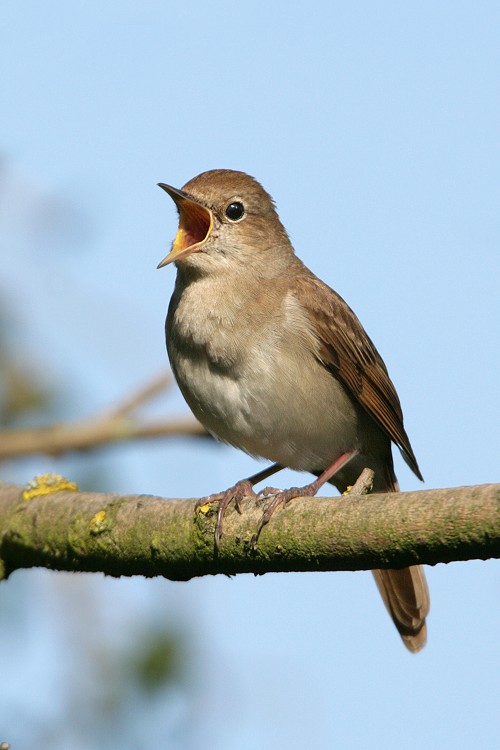- Luscinia megarhynchos
Identification
Subspecies The 3 races found in the Western Palearctic differ slightly in general colour and size with the richer coloured and shorter-winged nominate race in the west becoming gradually paler and longer-winged towards the east where races africana and hafizi occur. Much intergradation occurs and only extreme examples are separable. Race hafizi has been recorded as a vagrant in Britain.
Distribution
Breeds in southern England and from Iberia and France east to central Poland, Hungary, the Balkans and Greece, also in the Ukraine, Caucasus and northern Turkey, and parts of the Middle East. Breeds on most larger Mediterranean islands and the coastal strip of North-West Africa. First breeding for Malta was in 1995.
Migratory, leaving breeding areas in late July-early October and passing through the southern half of the Region to winter in sub-Saharan Africa and returning from early April-mid May.
Vagrant to Iceland and Ireland, Norway, Sweden and Finland.
Taxonomy
The Nightingale (Luscinia megarhynchos), also known as Rufous Nightingale and Common Nightingale, is a small passerine bird that was formerly classed as a member of the thrush family Turdidae, but is now more generally considered to be an Old World flycatcher, Muscicapidae. It belongs to a group of more terrestrial species, often called chats.
Habitat
Found in deciduous woodland, usually around edges or clearings, and especially where coppicing occurs. Also in copses, large gardens and on farmland with hedgerows and orchards, sometimes near water.
Behaviour
The Nightingale is slightly larger than the European Robin, at 15-16.5 cm length. It is plain brown above except for the reddish tail. It is buff to white below. Sexes are similar.
Nightingales are named so because they frequently sing at night as well as during the day. The name has been used for well over 1,000 years, being highly recognizable even in its Anglo-Saxon form - 'nihtingale'. It means 'night songstress'. Early writers assumed the female sang, whereas of course it is the male. The male Nightingale is known for his singing, to the extent that human singers are sometimes admiringly referred to as nightingales; the song is loud, with an impressive range of whistles, trills and gurgles. Its song is particularly noticeable at night because few other birds are singing. This is why its name (in several languages) includes "night". Only unpaired males sing regularly at night, and nocturnal song is likely to serve attracting a mate. Singing at dawn, during the hour before sunrise, is assumed to be important to defend the territory. Nightingales sing even more loudly in urban or near-urban environments, in order to overcome the background noise. The most characteristic feature of the song is a loud whistling crescendo, absent from the song of Thrush Nightingale. It has a frog-like alarm call.
Habitat ==Bird Song==
<flashmp3>Luscinia megarhynchos (song).mp3</flashmp3>
Listen in an external program




